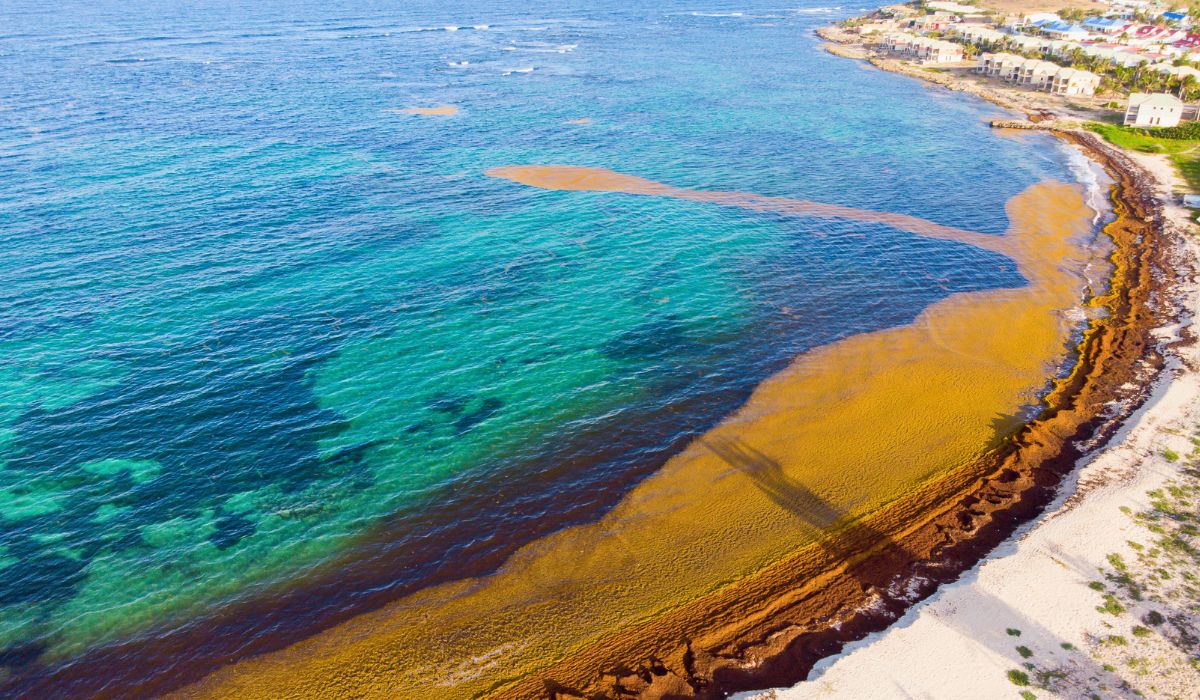Visible from space, an explosion of floating sargassum masses is wreaking havoc on the coastline from the west coast of Africa to Florida, invading the Caribbean beaches of Mexico, the Dominican Republic and other countries in the region.
Year after year, scientists monitoring sargassum reproduction in the Atlantic Ocean warn that “this season’s bloom is likely to be the largest ever,” and they never disappoint. This is now the ‘new normal’, they say.
Sargassum was first reported five centuries ago by Christopher Columbus when he wrote of his concerns about his caravels becoming trapped in a sea of ocean plants.
This seaweed was harmless to humans, marine life and tourism economies until 2011, when it began arriving en masse on Caribbean beaches during what are now called ‘inundation events’.
Scientists from prestigious American and Caribbean universities have pooled their resources to try to understand what could be causing this phenomenon and what can be done to stop it.
The study, “Changes in holopelagic sargassum spp. composition of the biomass over an unusual year,” published in PNAS helps us understand the problem.
“Understanding sargassum’s response to environmental conditions is crucial to unlocking its biology and potential value,” said the study’s lead author, Dr. Thierry Tonon from the University of York.
What Causes So Much Sargassum?
Data collected since 2011 has created the probable causes of these anomalous invasion events: water overfeeding, warming temperatures, Saharan dust clouds, and fluid boundary disturbances appear to be the main causes.
Scientists agree that there is much more to learn about what causes this phenomenon.
Overnutrified waters
Industrial-scale agricultural activities, such as intensive soy cultivation in Congo and the large amounts of nitrogen and phosphorus fertilizers deposited in the Amazon and Mississippi rivers by Brazil and the United States, are sometimes referred to as the ‘human nitrogen footprint’.
It is worth noting that the use of agricultural fertilizers in Brazil has increased enormously since 2011.
Experts from multiple fields agree that this could be the root cause of all this mess.
Warming temperatures
Climate change is reportedly causing an increase in nutrients in deep ocean waters in the sargassum belt in West Africa. As a tropical plant, warmer waters also promote the overproduction of seaweed.
Saharan dust clouds
This “clouds‘ extend thousands of kilometers across the Atlantic Ocean, fertilizing plankton and sargassum mats nitrogen, iron and phosphorus. Saharan dust clouds are believed to be the main cause of the sargus sum peak in 2015 and 2018.
Disruption of fluid boundaries
An increase in high winds, tropical storms and spiral currents are driving sargassum to the Caribbean coasts.
Is there a solution?
Entrepreneurs around the world have been actively proposing innovative ideas to gain commercial benefit from sargassum.
However, experts believe that although this biomass is abundant, its potential applications are limited due to its high arsenic content and other hazardous components.
“It is very important that the Caribbean islands affected by the flooding of sargassum can benefit from its valorization. Understanding how the sargassum we collect in Jamaica has changed en route to our shores and what factors may influence this, especially its arsenic content, will move us toward safe use of the algal biomass.” said Professor Mona Webber of the University of the West Indies.





